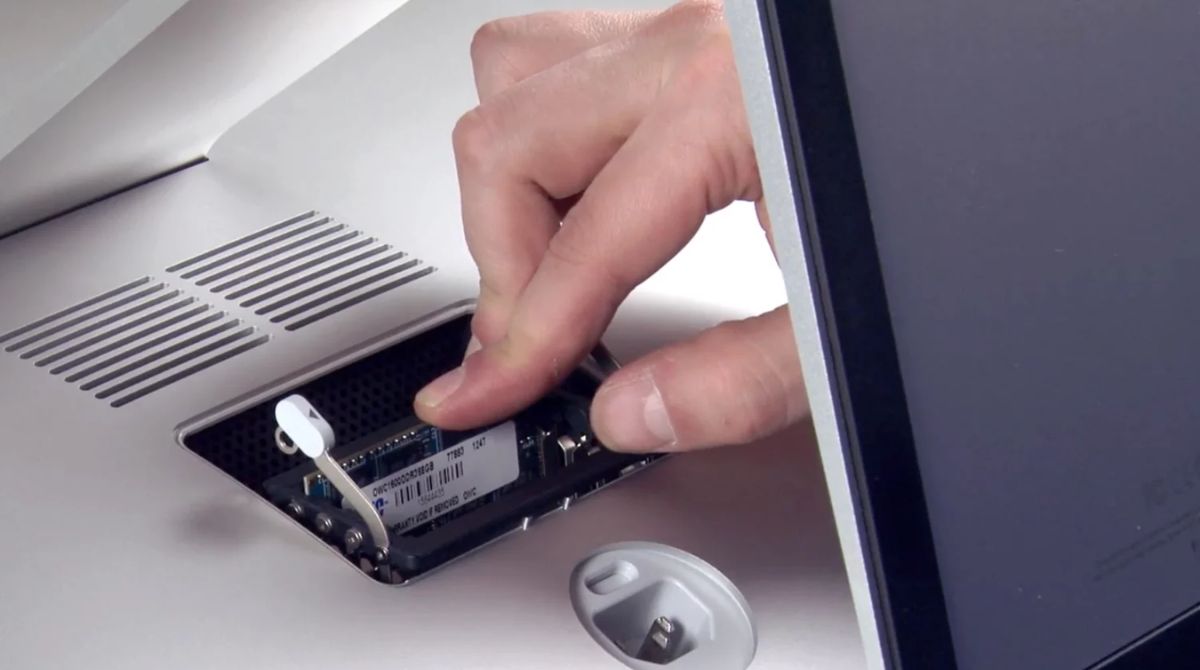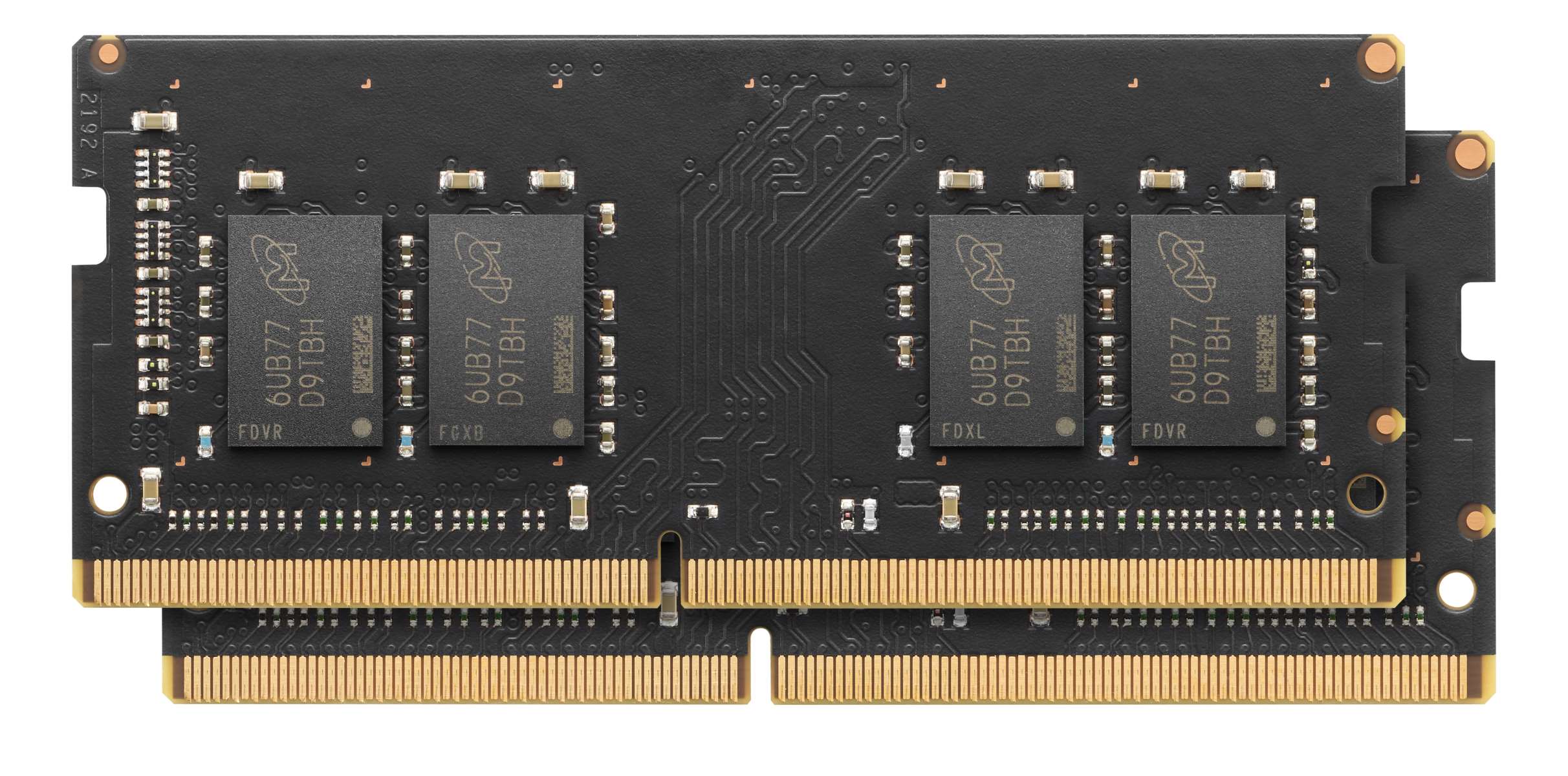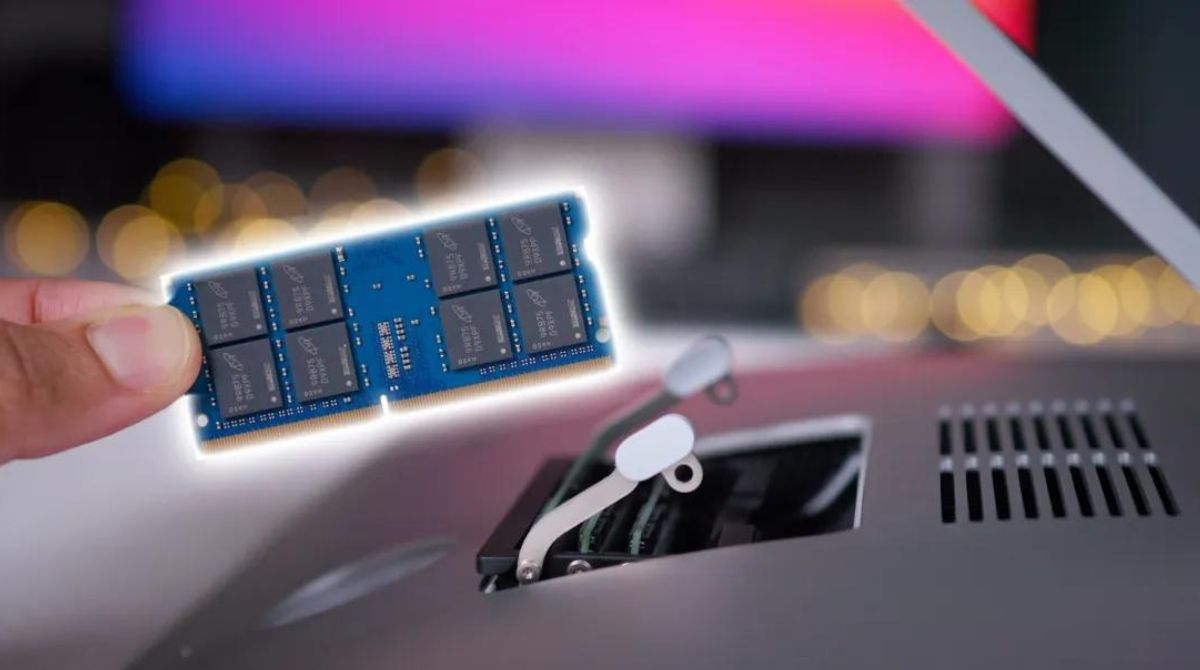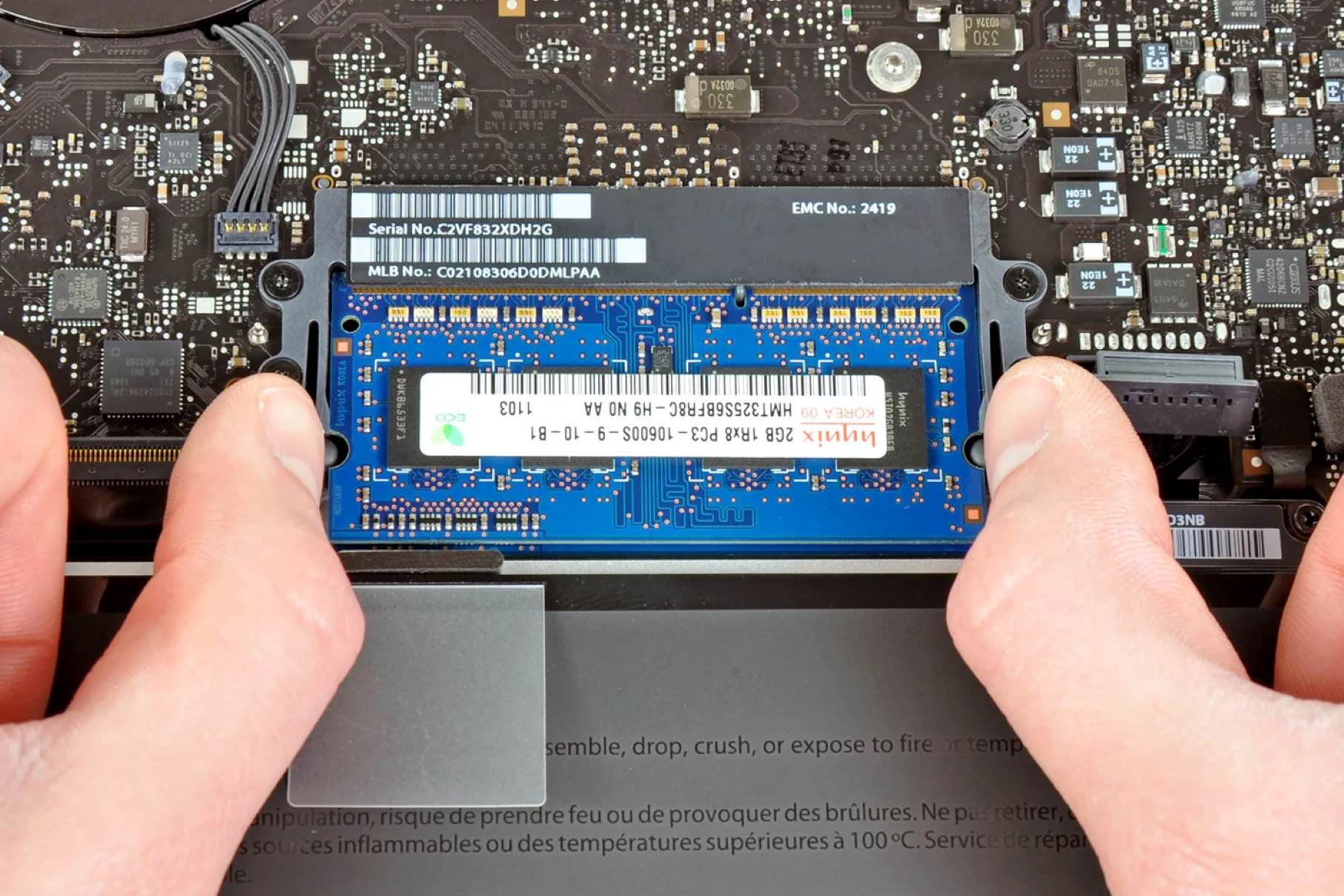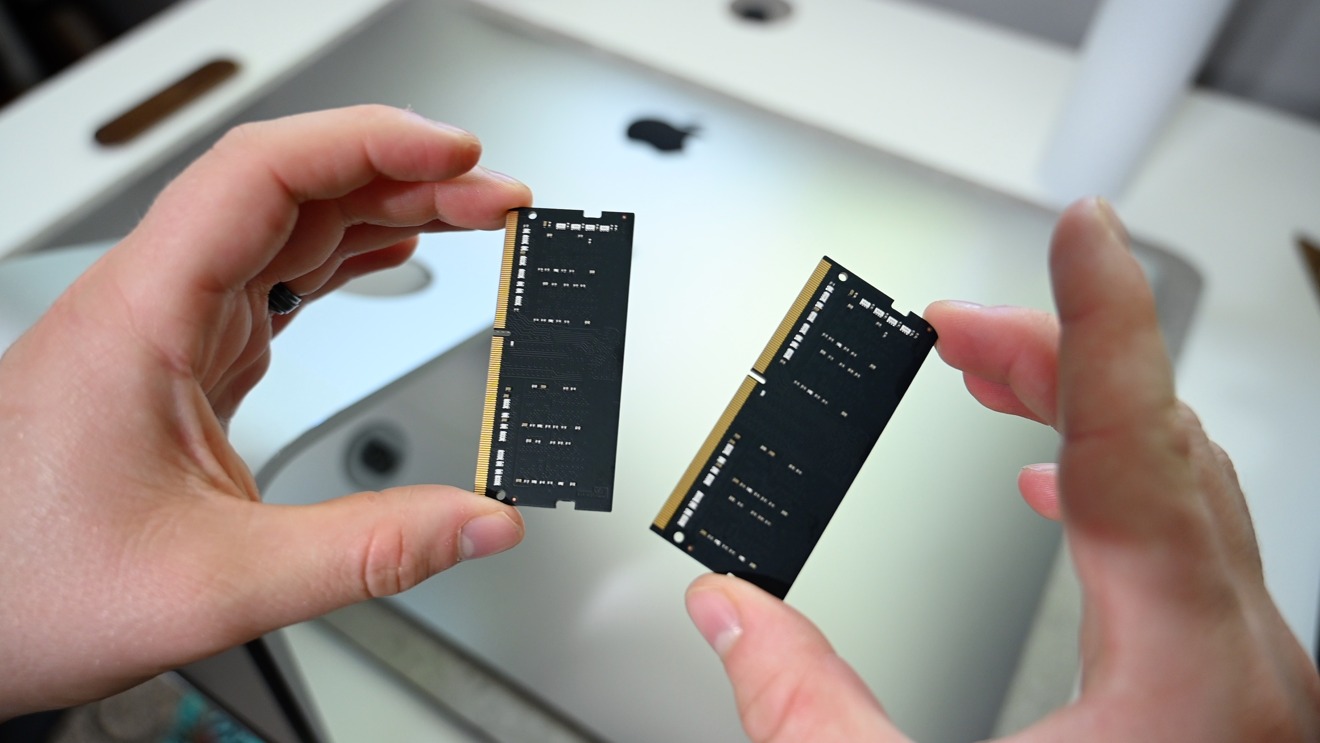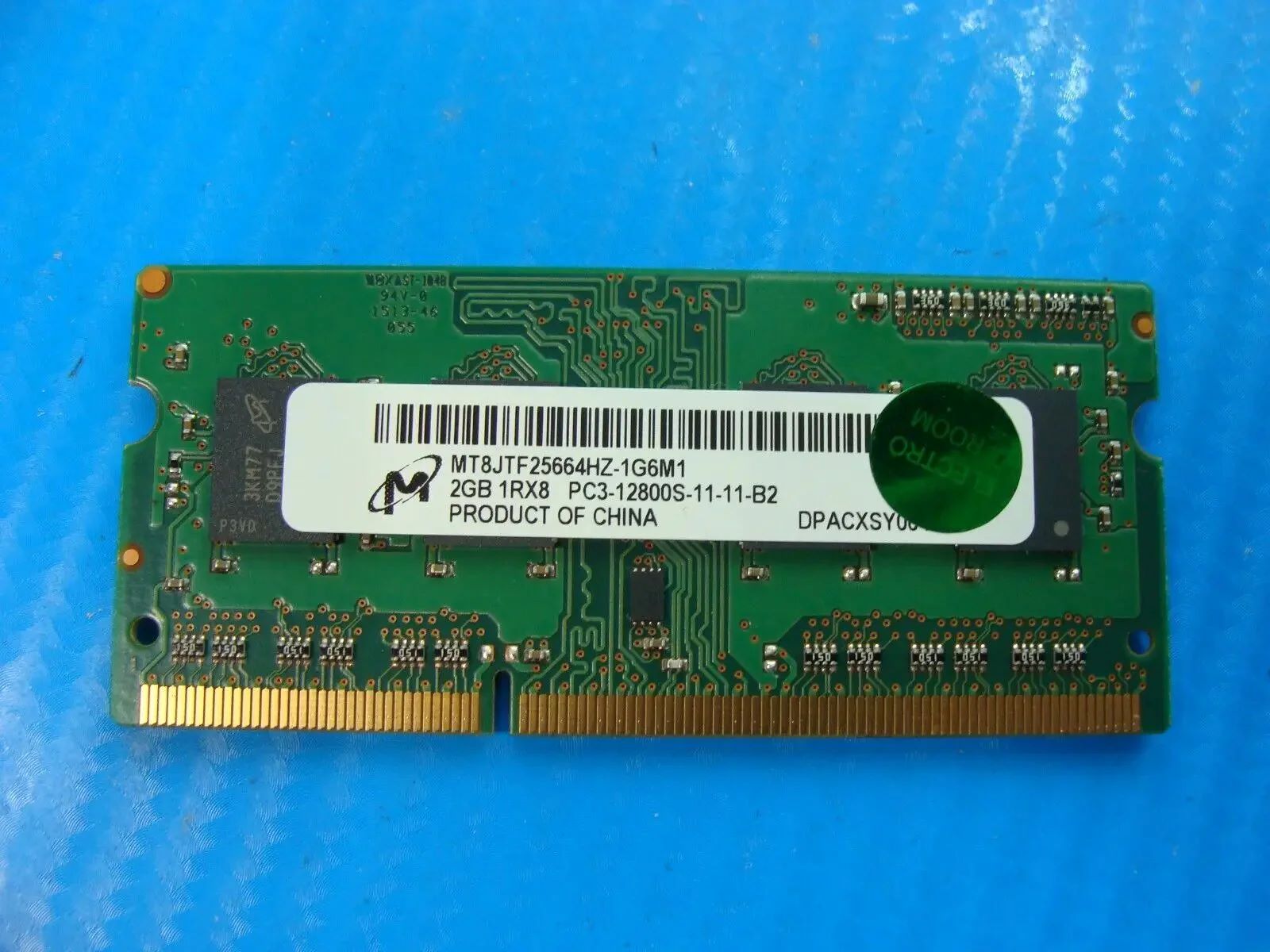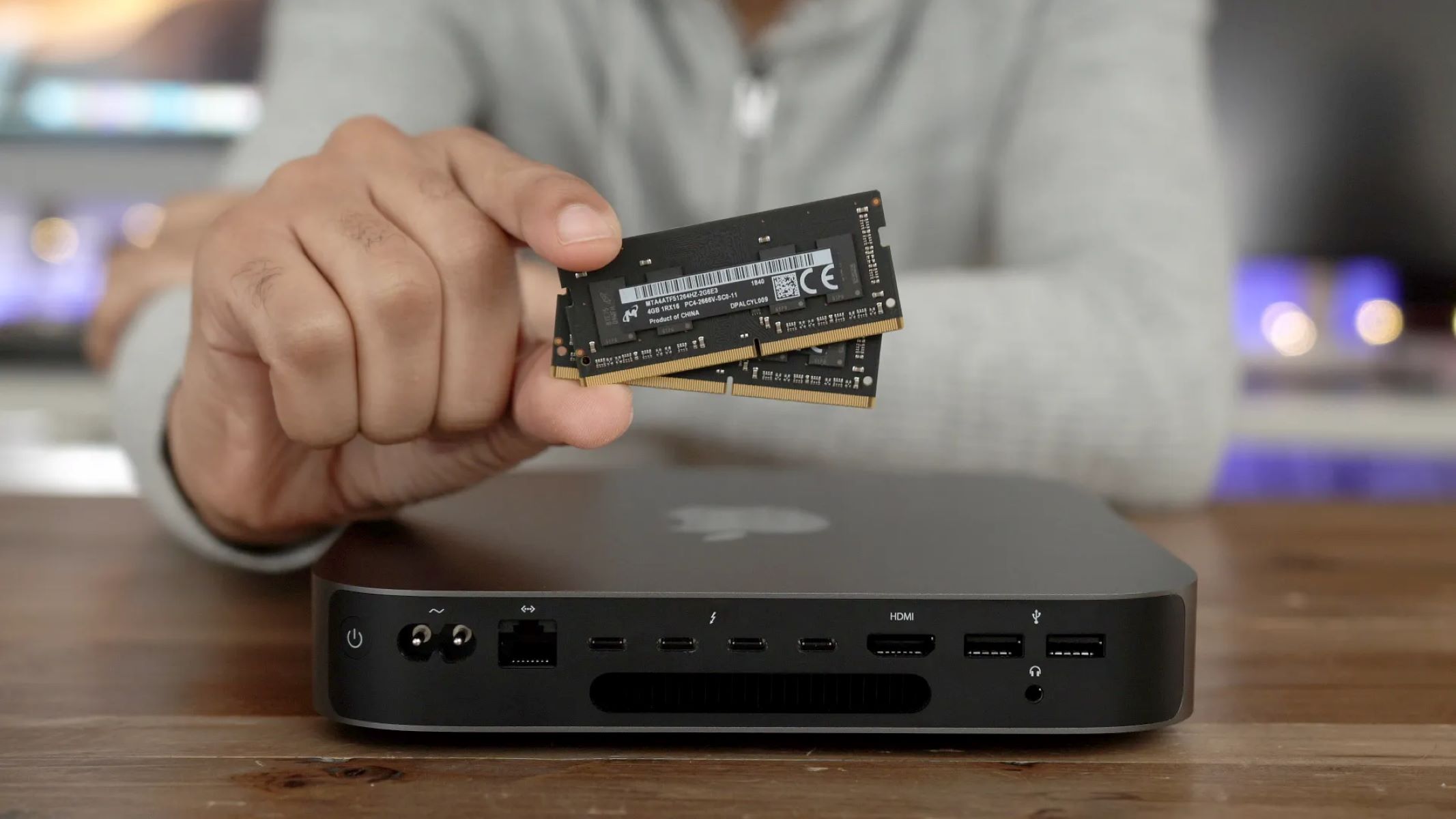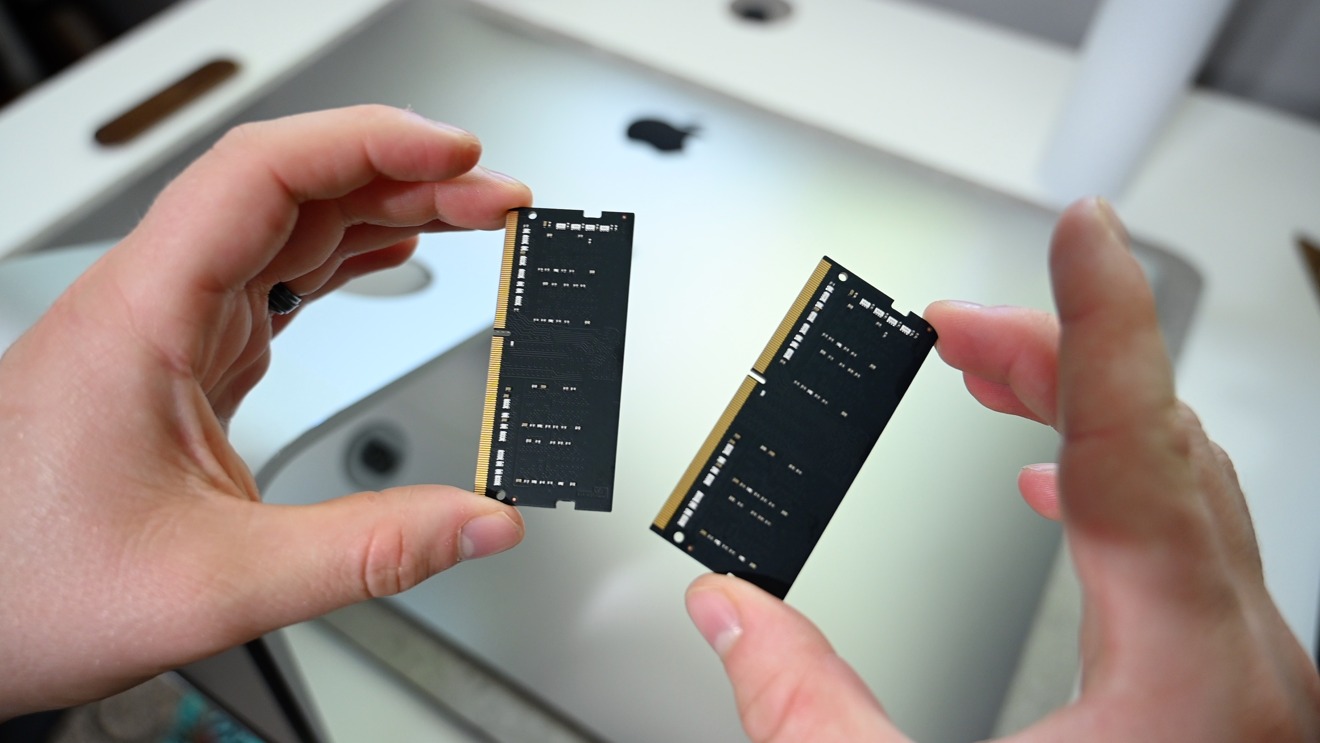Introduction
Upgrading the RAM of your iMac can significantly improve its performance, allowing for faster and smoother multitasking, seamless video editing, and better overall system responsiveness. Whether you’re a graphic designer, photographer, or avid gamer, adding more RAM can enhance your iMac’s capabilities and ensure you have the power you need to tackle resource-intensive tasks.
Before delving into the step-by-step process of adding RAM to your iMac, it’s important to ensure that your iMac is compatible with the RAM upgrade and that you have all the necessary tools.
First and foremost, check the specifications and model of your iMac to determine if it supports user-upgradable RAM. Some older iMac models may have soldered RAM, which cannot be upgraded. Next, identify the maximum RAM capacity your iMac can support; this information can usually be found in the product documentation or by checking the manufacturer’s website.
Once you’ve confirmed that your iMac is upgradable, you’ll need to gather the necessary tools. These typically include a soft cloth, a clean workspace, a screwdriver set, and the new RAM modules. It’s crucial to use RAM modules that are compatible with your iMac, both in terms of capacity and specifications, to ensure a successful upgrade.
This guide will take you through the step-by-step process of adding RAM to your iMac, starting with the preparation of your iMac for the upgrade and ending with the verification of the RAM installation.
By following this guide and taking the necessary precautions, you can easily and safely upgrade the RAM of your iMac, unleashing its full potential and improving your productivity and overall user experience.
Step 1: Checking the Compatibility and Requirements
Before embarking on the RAM upgrade process, it is crucial to ensure that your iMac is compatible with the RAM upgrade and that you have all the necessary requirements in place.
The first step is to check the specifications and model of your iMac. Determine if your iMac supports user-upgradable RAM or if it has soldered RAM that cannot be upgraded. This information can typically be found in the product documentation or by visiting the manufacturer’s website.
Additionally, identify the maximum RAM capacity that your iMac can support. This is an important factor as exceeding the maximum capacity may lead to compatibility issues and system instability. You can find this information in the product documentation or by referring to the manufacturer’s website.
Once you have confirmed that your iMac is upgradable and you know the maximum RAM capacity, it’s time to gather the necessary tools for the upgrade. You will need a soft cloth to protect your iMac’s display, a clean and well-lit workspace, a set of screwdrivers, and of course, the new RAM modules.
When selecting the RAM modules, it is essential to choose ones that are compatible with your iMac. Consider the capacity and specifications required by your iMac. This information can be found in the product documentation or by checking the manufacturer’s website. Using incompatible RAM modules may cause system instability and potentially void your warranty.
Additionally, it is recommended to consider reputable vendors or authorized resellers when purchasing the RAM modules. This ensures that you receive genuine and high-quality RAM modules for your iMac.
By thoroughly checking the compatibility and ensuring you have all the necessary tools and requirements, you can proceed with confidence to the next steps of the RAM upgrade process. This preparation phase is crucial to ensure a smooth and successful upgrade without any complications or compatibility issues.
Step 2: Gathering the Tools Needed
Before you begin the RAM upgrade process for your iMac, it is important to gather all the necessary tools to ensure a smooth and successful installation.
The first tool you will need is a soft cloth or microfiber cloth. This will help protect your iMac’s display from scratches or smudges during the upgrade process. Make sure the cloth is clean and free of any debris before using it.
In addition to the cloth, you will need a clean and well-lit workspace. Clear any clutter and ensure there is enough room to comfortably work on your iMac. Having a well-lit environment will also make it easier to see the components and perform the installation correctly.
A set of screwdrivers is another essential tool you will need. The specific screwdriver sizes required may vary depending on your iMac model. To determine the correct size, refer to the documentation or check the manufacturer’s website. It is crucial to use the correct screwdriver size to avoid damaging the screws or iMac’s enclosure.
Last but not least, you will need the new RAM modules that you have selected for the upgrade. Make sure to have them on hand before starting the installation process. Double-check that the RAM modules are compatible with your iMac in terms of capacity and specifications. It is also recommended to purchase the RAM modules from reputable vendors or authorized resellers to ensure their quality and compatibility.
Taking the time to gather all the necessary tools before starting the RAM upgrade process will make the installation smoother and more efficient. It will also reduce the risk of any accidental damage to your iMac or its components. By having everything ready, you can focus on the task at hand and complete the upgrade with confidence.
Step 3: Preparing the iMac for RAM Installation
Before you begin installing the new RAM modules in your iMac, it is important to prepare the iMac itself to ensure a smooth and safe upgrade process.
Start by shutting down your iMac and disconnecting all cables and peripherals connected to it. This includes the power cable, USB devices, external hard drives, and any other accessories. Disconnecting these will prevent any accidental damage or interference during the installation process.
Once the iMac is completely disconnected, place a soft cloth or microfiber cloth on a clean, flat, and well-lit surface. This will provide a clean and safe workspace and protect your iMac’s display from scratches or smudges.
Next, gently wipe the exterior of your iMac with the soft cloth to remove any dust or fingerprints. Pay special attention to the areas around the RAM compartment, as it is important to keep the inside of your iMac as clean as possible during the upgrade.
Ensure that you are working in a static-free environment. Static electricity can damage sensitive components of your iMac, so it is recommended to ground yourself properly before handling any internal parts. You can do this by touching a grounded metal object or wearing an anti-static wristband.
As an additional precaution, it may be helpful to have an anti-static mat or surface on which to place your iMac during the upgrade. This will further minimize the risk of static discharge damaging any internal components.
By properly preparing the iMac for the RAM installation, you can ensure a safe and clean environment to work in. Taking these steps will help prevent any accidental damage to your iMac and its components and ensure a smooth upgrade process.
Step 4: Opening the iMac Enclosure
In order to access the internal components of your iMac and install the new RAM modules, you will need to open the iMac enclosure. Follow these steps carefully to ensure a proper and safe opening:
1. Begin by laying your iMac face down on a soft cloth or towel to protect its screen from scratches. Make sure the surface is clean and free from any debris.
2. Locate the small tab or latch on the bottom edge or side of your iMac’s enclosure. This is usually located near the center or at one of the corners.
3. Gently press the tab or latch and hold it down firmly. While doing so, carefully tilt the iMac towards you to expose the bottom panel.
4. Once the bottom panel is accessible, release the tab or latch and set it aside. You may need to use a screwdriver or another tool to hold the tab or latch in the open position, if necessary.
5. Slowly lift the bottom panel away from the iMac’s enclosure. It should come off easily, revealing the internal components.
6. Be cautious of any cables or connectors that may be attached to the bottom panel. Carefully disconnect them, if necessary, by gently pulling the connectors apart.
7. Set aside the bottom panel in a safe place, ensuring it does not come into contact with any static-sensitive surfaces.
By following these steps, you can safely open the iMac enclosure and gain access to the internal components. It is important to handle your iMac with care throughout this process to avoid any damage. Now that the iMac enclosure is open, you are ready to locate the RAM slots and proceed with the installation of the additional RAM modules.
Step 5: Locating the RAM Slots
With the iMac enclosure open, the next step is to locate the RAM slots where the new RAM modules will be installed. Follow these instructions to find the RAM slots:
1. Look for the existing RAM modules that are already installed in your iMac. They are typically located near the center or bottom of the iMac, depending on the model.
2. Take note of the number of slots that are currently occupied by the existing RAM modules. This will help you determine how many additional RAM modules you can install.
3. Identify the empty RAM slots adjacent to the occupied ones. These slots may be labeled with empty modules or small stickers indicating their location.
4. Carefully examine the slots to understand their orientation. Each slot has a small retaining tab on either side that holds the RAM module in place. You will need to release these tabs to remove the existing RAM or install the new modules.
5. Take a moment to observe and understand the layout of the RAM slots and their corresponding retaining tabs. This will help you correctly install the new RAM and ensure a secure fit.
If you are unsure about the location or identification of the RAM slots, consult the iMac’s documentation or manufacturer’s website. It is important to have a clear understanding of the RAM slots’ layout to avoid any mistakes during the installation process.
By successfully locating the RAM slots, you are now ready to proceed with the installation of the additional RAM modules. Keep in mind that the process can vary slightly depending on the iMac model. Follow the instructions provided by the manufacturer to ensure proper installation and optimal performance.
Step 6: Installing the Additional RAM Modules
Now that you have located the RAM slots in your iMac, it’s time to install the additional RAM modules. Follow these steps carefully for a successful installation:
1. Before handling the new RAM modules, make sure to ground yourself by touching a grounded metal object or wearing an anti-static wristband. This will help prevent any static discharge that can damage the RAM or other components.
2. Take the new RAM module and align it with the empty slot. Make sure the notch on the module matches the key on the slot for proper alignment. Avoid touching the gold contacts on the module as this can cause damage or poor connection.
3. Once properly aligned, gently insert the module into the slot at a 45-degree angle. Apply even pressure until it is fully inserted and the module is in a vertical position.
4. The retaining tabs on either side of the slot should automatically snap into place to secure the RAM module. Ensure that the module is securely seated and that the retaining tabs are fully engaged.
5. Repeat the same steps for each additional RAM module you are installing, following the same alignment and insertion process in their respective slots. Be aware of any specific installation guidelines mentioned in the iMac’s documentation.
6. Once all the RAM modules are installed, visually inspect them to ensure they are properly seated and secured. Double-check that the retaining tabs are fully engaged and holding the modules in place.
7. Once you are satisfied with the installation, it is time to reattach any cables that were disconnected earlier, such as the cables for the bottom panel. Ensure they are correctly plugged in and firmly connected.
By following these steps, you can successfully install the additional RAM modules in your iMac. Double-check that everything is correctly aligned and seated before proceeding to the next step. With the new RAM modules in place, your iMac is ready for the final steps of the upgrade process.
Step 7: Closing the iMac Enclosure
Now that you have installed the additional RAM modules in your iMac, it’s time to close the iMac enclosure. Follow these steps carefully to ensure a proper and secure closure:
1. Begin by carefully aligning the bottom panel back onto the iMac’s enclosure. Take note of any connectors that need to be guided through their respective openings in the enclosure.
2. Gently press the bottom panel against the iMac’s enclosure, ensuring it is properly aligned and flush with the edges.
3. Once aligned, use both hands to apply even pressure to the edges of the bottom panel. Gradually work your way around the panel to ensure it is fully seated and snaps into place.
4. Check that all the retaining tabs on the bottom panel are securely fastened and holding it in place. This will ensure the panel remains in position and provides a proper seal for the enclosure.
5. Give the bottom panel a light tug to confirm that it is securely attached. If there is any movement or a loose fit, double-check the alignment and try reseating the panel.
6. Once the bottom panel is securely closed, wipe it down with a soft cloth to remove any smudges or fingerprints that may have accumulated during the installation process.
7. Finally, reconnect all the cables and peripherals that were disconnected earlier, ensuring they are correctly plugged in and secure.
By following these steps, you can successfully close the iMac enclosure, ensuring a proper seal and protecting the internal components. Take your time and ensure everything is securely fastened before proceeding to the final steps of the RAM upgrade process.
Step 8: Turning On the iMac and Checking the RAM Upgrade
With the iMac enclosure closed, it’s time to turn on your iMac and verify that the RAM upgrade was successful. Follow these steps to complete the final stage of the process:
1. Reconnect the power cable to your iMac and connect any other peripherals or accessories that you use regularly.
2. Press the power button to turn on your iMac. Wait for it to boot up and reach the desktop or login screen.
3. Once your iMac is operational, go to the Apple menu and click on “About This Mac.” This will open a window displaying information about your iMac’s hardware, including the newly installed RAM.
4. In the “About This Mac” window, click on the “Memory” tab. Here, you will see details about the RAM, such as the total installed memory and its specifications.
5. Verify that the total installed memory matches the capacity of the RAM modules you installed. It should reflect the increase in RAM that you expect from the upgrade.
6. You can also perform a quick test to ensure that the RAM is functioning properly. Open several applications or perform tasks that would typically require a significant amount of memory. Observe the overall performance of your iMac and check for any improvements in speed and responsiveness.
7. If everything appears to be working correctly and you are experiencing smoother performance, congratulations! You have successfully upgraded the RAM in your iMac.
8. If you encounter any abnormalities or issues, double-check that the RAM modules are securely seated and properly installed. It is also advisable to check for any firmware updates for your iMac that could address any potential compatibility issues.
By following these steps and confirming that your iMac recognizes the additional RAM, you can ensure that the upgrade was successful and that your iMac is now benefiting from the increased memory. Enjoy your newly improved performance and the ability to handle more resource-intensive tasks effortlessly!
Conclusion
Upgrading the RAM in your iMac can have a significant impact on its performance and overall user experience. By following the step-by-step process outlined in this guide, you can successfully add more RAM to your iMac and unlock its full potential.
Throughout the process, it is crucial to ensure compatibility and gather the necessary tools. Checking the specifications of your iMac and selecting compatible RAM modules will help avoid any issues during the installation. Equally important is creating a safe and static-free environment and properly preparing your iMac for the upgrade.
Once you have opened the iMac enclosure, located the RAM slots, and installed the new RAM modules, it is important to securely close the enclosure. Take your time to align the bottom panel and ensure all retaining tabs are engaged, providing a proper seal for the iMac’s interior.
Finally, power on your iMac and verify that the RAM upgrade was successful. Check the system information to confirm the newly installed RAM’s capacity and ensure that your iMac recognizes the upgrade. Perform some tests to gauge the improved performance and responsiveness brought about by the increased memory.
By successfully upgrading the RAM in your iMac, you can enjoy enhanced multitasking capabilities, smoother application performance, and an overall improved computing experience. Remember, it’s essential to take appropriate precautions throughout the process, handle the RAM modules with care, and consult the iMac’s documentation or manufacturer’s website for specific instructions related to your model.
Congratulations on successfully adding more RAM to your iMac! With the increased memory, you can now tackle even more demanding tasks and make the most out of your iMac’s potential.







